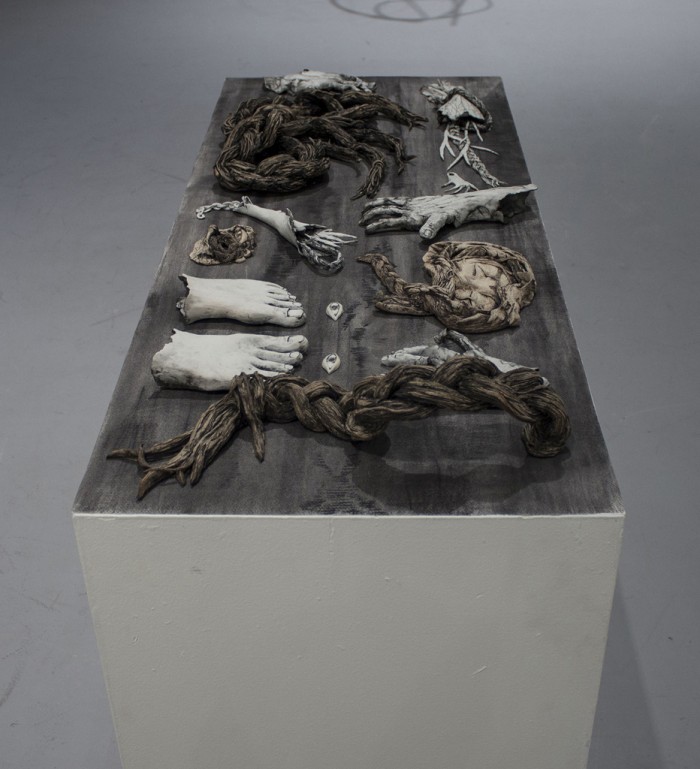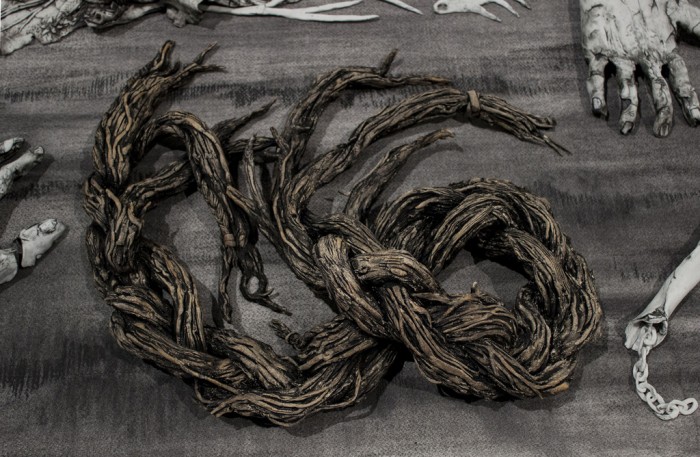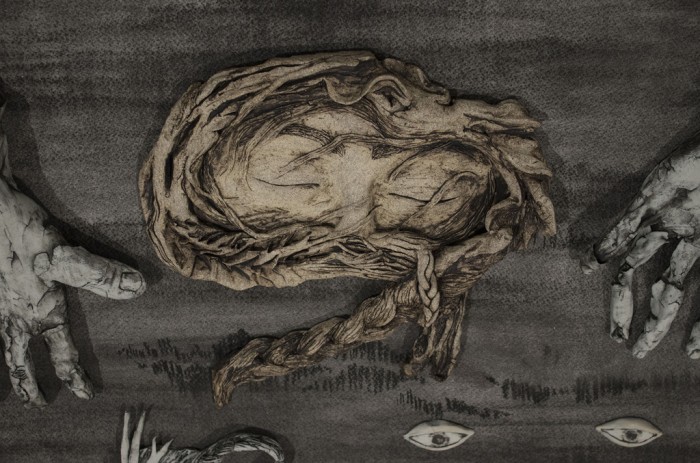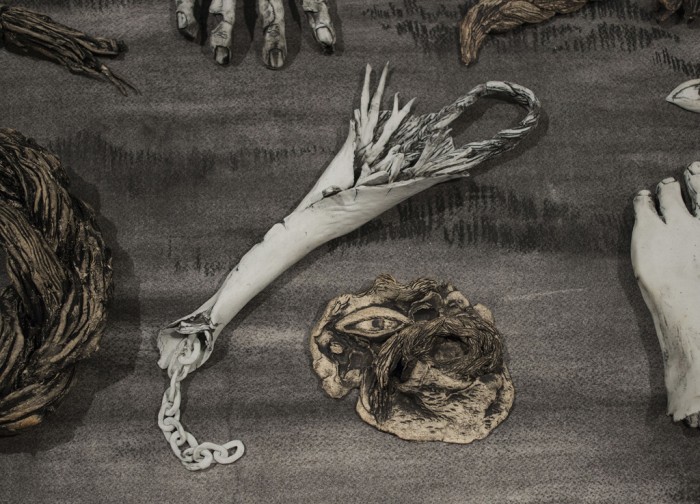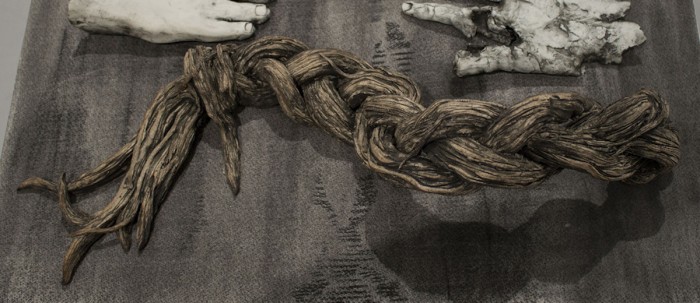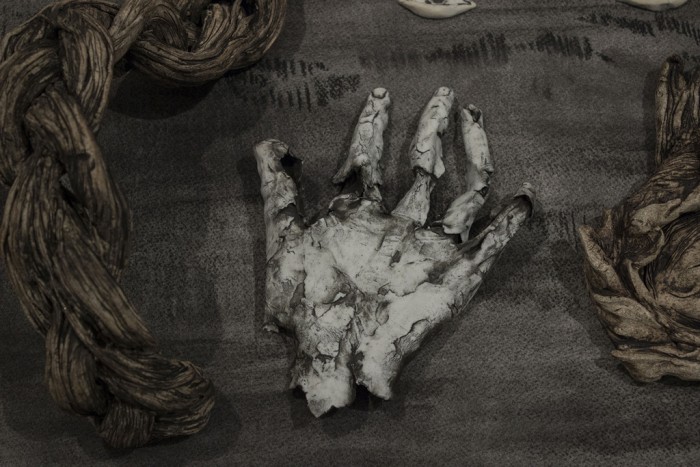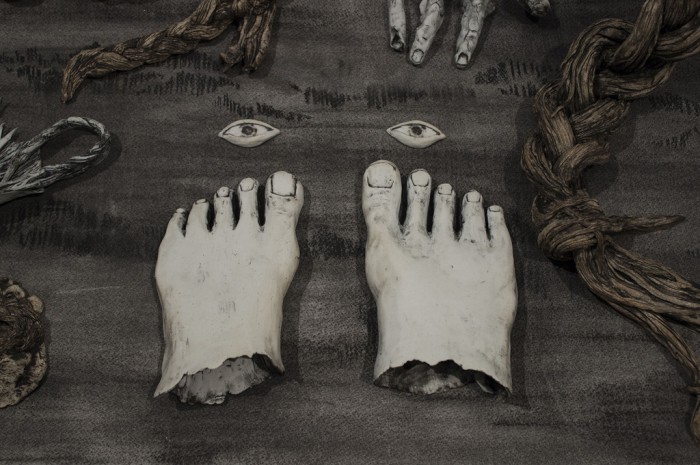When confronted with Ali Aschman’s new collection of ceramics, one is pressed to make sense of their haunting beauty. The Californian-born artist considers the theme of women’s bodies merged with the natural landscape in her latest ongoing body of work called “The Trap”.
The braided hair and fragmented body parts seem to beg to be explained, but Aschman says the installation is not about logic but experience – specifically her own experience making her way in the world as a woman, battling the inner conflict between culturally enforced expectations and her desire to live in a way that feels honest and true.
This conflict formed the basis of Aschman’s exploration into the coded depictions of women associated with nature, such as an enclosed garden symbolising chastity, sexual innocence and an idealised femininity, or a spilled vase of flowers symbolising uncontrolled sexuality, among many others.
“The Trap is not so much a representation of this particular theme as it is an exploration of my personal feelings about this kind of imagery, which has been used to further gender stereotypes like the virgin/whore dichotomy and to oppress women,” says Aschman.
But, while repulsed by the stereotypical depictions of women in nature, Aschman is also inexplicably drawn to them. “My uneasiness with the subject matter is translated visually into an uncertainty of images – the clay forms seem to be braided hair, but they are also roots and vines and veins, the hands and feet are withered husks, there are too many of them to be just one body,” she adds.
Aschman chose to pursue and explore her confusion rather than force herself to find a clear answer.
Although I desire to create a new narrative that escapes oppression, I am inevitably seduced by the romanticized imagery that I feel I am expected to contest… I keep falling into the trap.
Best known for her handcrafted elements in stop-motion animation, Aschman has been expressing herself through the medium of ceramics for the past year. Her work is as much an exploration the stereotypical woman as it is about the exploration of her new medium. Other themes that come to the fore include; fear, sex, aging, and loneliness.
“There is no clear narrative at play, but there is a hint at some kind of history or past trauma,” she explains. “I am more interested in evoking an atmosphere of tension that reflects the discomfort I feel about all of these issues than I am in communicating any specific message.”
While her work is open to interpretation, Aschman explains that the braided hair signifies an idealised femininity, “the idea that women should have long hair, but that it should be tightly bound and controlled.”
The hands and feet are implications of a human body or bodies. “Specifically, hands are used as stand-ins for the idea of individual agency, but they are cut off from the body, fragile and broken.”
And the duality of the face with closed eyes and stifled mouth, and the open eyes detached from a face, are representative of how Aschman often feels unable to say or make anything constructive about the themes at play. “That everything I’m doing is really pointless and selfish,” she adds.

